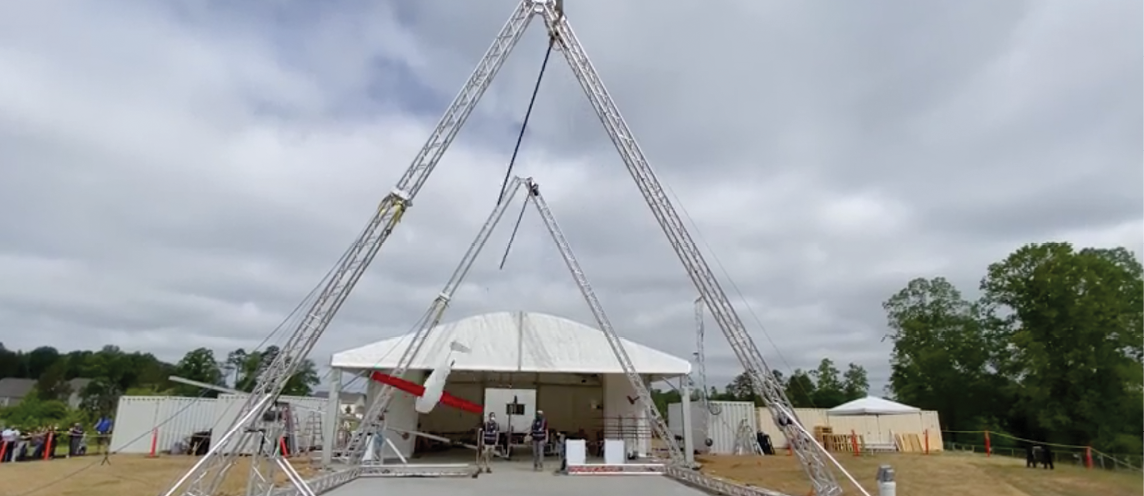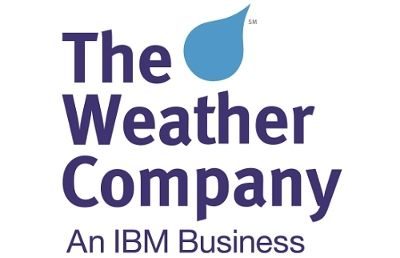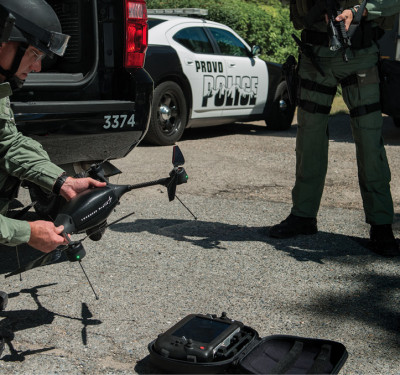
“You never let a serious crisis go to waste” is a quote from then-Obama chief of staff and subsequent Chicago mayor Rahm Emanuel. Could it be a guideline for greater commercial drone use during the COVID crisis? Indeed, I cannot think of an exigency that would better illustrate the value proposition of drones to the general public than a crisis that needs services such as contactless delivery and massive decontamination of public spaces to avoid a deadly virus. Neither can I think of a better time to trial new supportive drone missions than during a crisis that keeps people indoors and radically cuts air traffic.
Initial administration action was fast—the White House wanted drone options and they wanted them NOW. Top drone staffers swiftly realized there wasn’t a “drone silver bullet” for the crisis compared to an effective vaccine or treatment regimen, but they did think drones could help with safe delivery, decontamination and public health compliance. How has America done in each category? Are drones helping with the crisis and showing the American public how valuable they can be?
DRONE DELIVERY
This category got the most press, but as of publication the U.S. has only seen drone delivery in limited circumstances over small, relatively unpopulated areas within visual line of sight. Activity usually has happened in states or with companies already working with the FAA for a long time as part of an Integrated Pilot Program (IPP) or a UAS test site, or in collaboration with the ASSURE FAA research center of excellence. There were no drone deliveries in virus hot spots that really could have benefited from them; plagued cities like New York, New Orleans and Los Angeles were just too densely populated with too much challenging urban terrain to easily host drone delivery.
 The marquee COVID drone delivery effort was Alphabet/Wing’s work in Virginia. I participated in the FAA UAS Symposium over the summer and must have heard about Wing’s drones delivering books to children in Christiansburg, Virginia, at least seven times. Once I got past the fact that Wing was talking about delivering books (and not the prescriptions or food they had been delivering there since October) to children who apparently didn’t have iPads, I took a deeper look at Wing’s delivery and it met all the criteria for a “usual suspect” drone operation. Large company involved? Check—they don’t get much bigger than Alphabet/Google. Worked with the FAA for a lengthy period before delivery? Check—Wing and the FAA have been at drone delivery for at least two years by my count. Indeed, Wing was one of the first Part 135 FAA-certified drone air carrier operations. Conducted near an FAA UAS Test Site or IPP? Check and Check. Flown in a smaller town or rural area? Check. Conducted over a large area? No. It WAS done beyond line of sight (which is huge!) but restricted to the Christiansburg area.
The marquee COVID drone delivery effort was Alphabet/Wing’s work in Virginia. I participated in the FAA UAS Symposium over the summer and must have heard about Wing’s drones delivering books to children in Christiansburg, Virginia, at least seven times. Once I got past the fact that Wing was talking about delivering books (and not the prescriptions or food they had been delivering there since October) to children who apparently didn’t have iPads, I took a deeper look at Wing’s delivery and it met all the criteria for a “usual suspect” drone operation. Large company involved? Check—they don’t get much bigger than Alphabet/Google. Worked with the FAA for a lengthy period before delivery? Check—Wing and the FAA have been at drone delivery for at least two years by my count. Indeed, Wing was one of the first Part 135 FAA-certified drone air carrier operations. Conducted near an FAA UAS Test Site or IPP? Check and Check. Flown in a smaller town or rural area? Check. Conducted over a large area? No. It WAS done beyond line of sight (which is huge!) but restricted to the Christiansburg area.
BVLOS (beyond visual line of sight) drones delivering books to children during a pandemic is a notable industry achievement, but its limited scale and application is not swiping at COVID for the general public, in my opinion. Florida’s and North Carolina’s drone delivery efforts seem more applicable to national needs during the pandemic. UPS Flight Forward and CVS teamed with the nation’s largest retirement community, The Villages, to deliver personal prescriptions from nearby CVS stores. The UPS drone only flew within visual line of sight to a central location near The Villages and a UPS delivery truck made the final distance delivery but at least UPS Flight Forward is another operating Part 135-certified air carrier.
The more interesting COVID contribution was from Africa emergency vet Zipline, which partnered with Novant Health Medical Center in Charlotte, North Carolina, with help from the North Carolina IPP. The Half Moon Bay, California-based company delivered medical samples and supplies over 20-mile beyond visual line of sight routes, with mostly autonomous drones (remote pilot only intervenes in an emergency). True, the routes were over mostly unpopulated areas and it was only one site, but Zipline hopes to get Part 135-certified soon, and its BVLOS methodology shows promise for scaling deliveries.
THE VERDICT: These delivery operations are demonstrating applicable COVID benefits and, especially with Zipline, a very innovative BVLOS approach. Still, they’re not easily scaled or being widely applied to hotspots to effect a major impact. Yet.
DRONE DECONTAMINATION
Drones are ideal platforms to apply disinfectants over large areas quickly without exposing workers to the virus. Indeed, industry can conduct drone decontamination just fine under most provisions of Part 107. Decon drones do not need to fly beyond visual line of sight, can do their business over vacant venues to avoid flying over people and definitely do not need to fly higher than 400 feet or faster than 87 knots to lay down disinfectant.
What prevents drone decontamination from operating completely under part 107 is a prohibition against carrying hazardous material and payload. Drones must be under 55 pounds to comply with Part 107; a drone that small would do well to carry a 10-pound payload, or about a gallon and a half of disinfectant. But here is where the industry’s ever-progressive ingenuity came in handy. The smart folks at EagleHawk, in Buffalo, New York, got around Part 107 payload restrictions by having their drones carry a disinfectant distribution hose system to spray entire sections of a football stadium in a single pass. The hose was connected to a large disinfectant reservoir on the ground, thereby avoiding landing every few minutes to change tanks. The Bills might not play to a full stadium this season, but it sounds like it will be a very clean one.
Ingenuity aside, there remains a social-acceptance component to drone decon. The American public will likely support drones decontaminating an empty stadium, but would they support drones spraying neighborhood playgrounds? The “Chem Trails” crowd is already vocal enough about water vapor condensed by natural forces. What would they think about drones over playgrounds?
THE VERDICT: Drone ingenuity at its finest. Very applicable to the virus, even if it will be a while before the Chem Trails crowd tolerates widespread drone decon. It will work for large private venues in hotspots. This is scalable.
DRONE BROADCASTING
The Chinese got a lot of publicity for using drones to harangue people violating quarantine in Wuhan. Granted, the operators did it with a sense of humor but they had an appreciable effect on convincing Chinese citizens to comply with restrictions. There also were a handful of events involving drone broadcast during this crisis in America. My favorite was the “Anti-COVID-19 Volunteer Drone Task Force” broadcasting to New Yorkers while flying over the East River to comply with ops over people rules. In a more organized approach, the Chula Vista Police Department in California used drones to broadcast helpful information to homeless people living rough in a wilderness area. However, drone broadcast wasn’t widespread and I can’t find an instance of American officials using drones to call out individuals as the Chinese did.
THE VERDICT: Very applicable to the crisis, easily scalable and usable in virus hotspots. Getting Americans to tolerate drones yelling at them and to comply? That might take some more time.
SUMMARY JUDGMENT
Overall, America’s drone response to the pandemic has been hit and miss. Drone decon and drone-casting are on point and probably here to stay, pending eventual buy-in from the naysayers. However, drone package delivery, the mission that most advocates hoped would prove noteworthy during the crisis, has made a minimal contribution so far. Why?
I know most old drone hands may want to blame the FAA for holding up progress, but I think the FAA did as much as it could do within current regulations while simultaneously handling other major aviation issues related to the pandemic. True, the FAA approved the first Part 135 drone delivery services before the crisis, but deliveries done during it proved their procedures worked. Zipline’s BVLOS work in North Carolina was impressive and applicable to larger operations, as were Google Wing’s delivery procedures.
Despite staffing challenges from the crisis, the FAA is on track to produce rules that will make scaling these operations much easier. Final remote ID rules are scheduled to publish in December, final operations over people rules will come out soon after and, according to statements at the FAA Symposium, the FAA has more than 30 unmanned aircraft undergoing type certification, with several due for approval later this year. It has taken a long time to get here, but that is significant progress for the industry.
The FAA was also not the limiting factor in convincing industry to mount larger drone delivery operations during the crisis; cold, hard cost calculations stopped them. Drones have to be super-automated so they can be super-efficient and therefore super-cheap before they can beat the status quo of a delivery van. Super-automation means automated packaging at the warehouse, automated payload mating and a very efficient unmanned traffic management system with a great degree of air vehicle autonomy. It means one remote pilot controlling many air vehicles, and an automated method for charging/changing batteries. It means certified air vehicles with much longer ranges than today’s systems. Home drone delivery means very precise mapping and even more precise routing. It also means that costs for status quo ground delivery tech must stay about the same, while taking advantage of said tech to be more competitive with drone delivery. (For more on Wing’s efforts in this sphere and its overall UTM developments, see page 62.)
None of this means we will never get large-scale drone delivery; quite the opposite. I think the crisis is giving both the FAA and industry the opportunity to truly see a future where drone delivery can step in to save millions of Americans from taking risky trips to the supermarket during a pandemic. Both parties now have a greater appreciation for the challenges and an even greater appreciation for what they must do to surmount them.
It may have been too much to expect America to have large-scale, pandemic-altering drone services emerge from this crisis, but a foundation is in the making. I think Rahm Emanuel would be proud that the U.S. drone community took flight when challenged.






